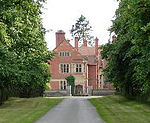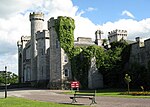Bontnewydd Palaeolithic site
Archaeological sites in DenbighshireNeanderthal sitesPages with Welsh IPAScheduled monuments in DenbighshireStone Age sites in Wales

The Bontnewydd palaeolithic site (Welsh: [bɔntˈnɛuɨ̯ð]), also known in its unmutated form as Pontnewydd (Welsh language: 'New bridge'), is an archaeological site near St Asaph, Denbighshire, Wales. It is one of only three sites in Britain to have produced fossils of ancient species of humans (together with Boxgrove and Swanscombe) and the only one with fossils of a classic Neanderthal. It is located a few yards east of the River Elwy, near the hamlet of Bontnewydd, near Cefn Meiriadog, Denbighshire.
Excerpt from the Wikipedia article Bontnewydd Palaeolithic site (License: CC BY-SA 3.0, Authors, Images).Bontnewydd Palaeolithic site
Geographical coordinates (GPS) Address Nearby Places Show on map
Geographical coordinates (GPS)
| Latitude | Longitude |
|---|---|
| N 53.226944444444 ° | E -3.4761111111111 ° |
Address
LL17 0LN , Cefnmeiriadog
Wales, United Kingdom
Open on Google Maps









